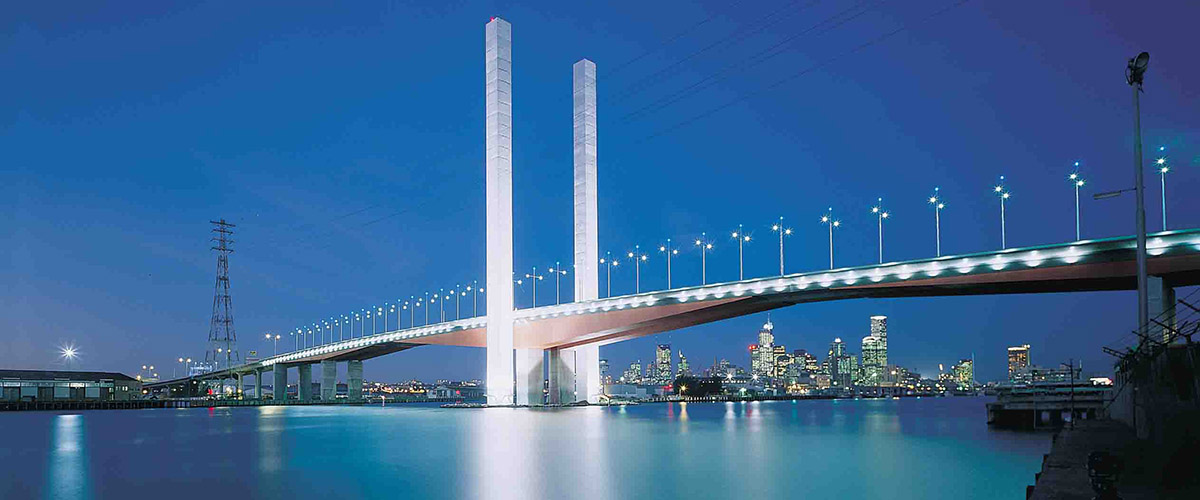The first section of CityLink – the Western Link that includes the Bolte Bridge – opened 25 years ago this month. The impacts of this road have truly shaped life in Melbourne.
Today it’s hard to imagine a Melbourne with three major freeways, the Tullamarine, West Gate and Monash all feeding traffic into the city centre. But before CityLink, motorists regularly needed to drive through the city centre (including down Swanston Street) to get from Melbourne’s southeast to the north or west, or vice-versa.
And it’s also hard to imagine today’s Melbourne without CityLink’s biggest landmarks – the Bolte, the Cheese Stick (correct title: The Melbourne International Gateway), those two tunnels – or those night-time drives through the colourful Sound Tube. (The light displays on the Sound Tube and the Bolte Bridge are for more than visual enjoyment – they’re also often lit up to draw awareness to important causes.
CityLink also shows up in Melbourne life in other ways. Like the annual Run For the Kids event. This fun run, along a closed-to-traffic CityLink, attracts more than 25,000 participants each year, all helping raise money for the Royal Children’s Hospital Good Friday Appeal. So far Run For the Kids has raised almost $23 million for the hospital’s annual appeal.
Back in the 1990s, CityLink was Melbourne’s biggest-ever road project by a wide margin. It was also a major engineering feat that, along with the construction of the Bolte Bridge, also included building two tunnels, the Domain and the Burnley, that posed technical challenges such as tunnelling under the Yarra River.
The project was also innovative for its road technology approach. The tag on your vehicle windscreen is no big deal today but it was a real game-changer in the 1990s – most toll roads around the world at that time were managed via tolling booths. Electronic tolling was so new CityLink was the first road in the southern hemisphere to adopt it.
Since then, CityLink has continued to innovate, including through:
- installing pacemaker lighting inside the Burnley Tunnel (an Australian first)
- hosting an automated truck trial that saw a truck drive itself, incident free (and with a human safety driver supervising from behind the wheel) over several nights in late 2022
- adopting world-leading smart road technology, such as AI-powered automatic incident detection capabilities, that help improve safety for everyone on the road.
One thing that hasn’t changed much for CityLink is the travel-time savings it delivers Melburnians. Customers using CityLink today gain travel-time savings of up to 30 minutes – same as 15 years ago – even with Melbourne’s population growing by around 1.3 million during this same time period.

